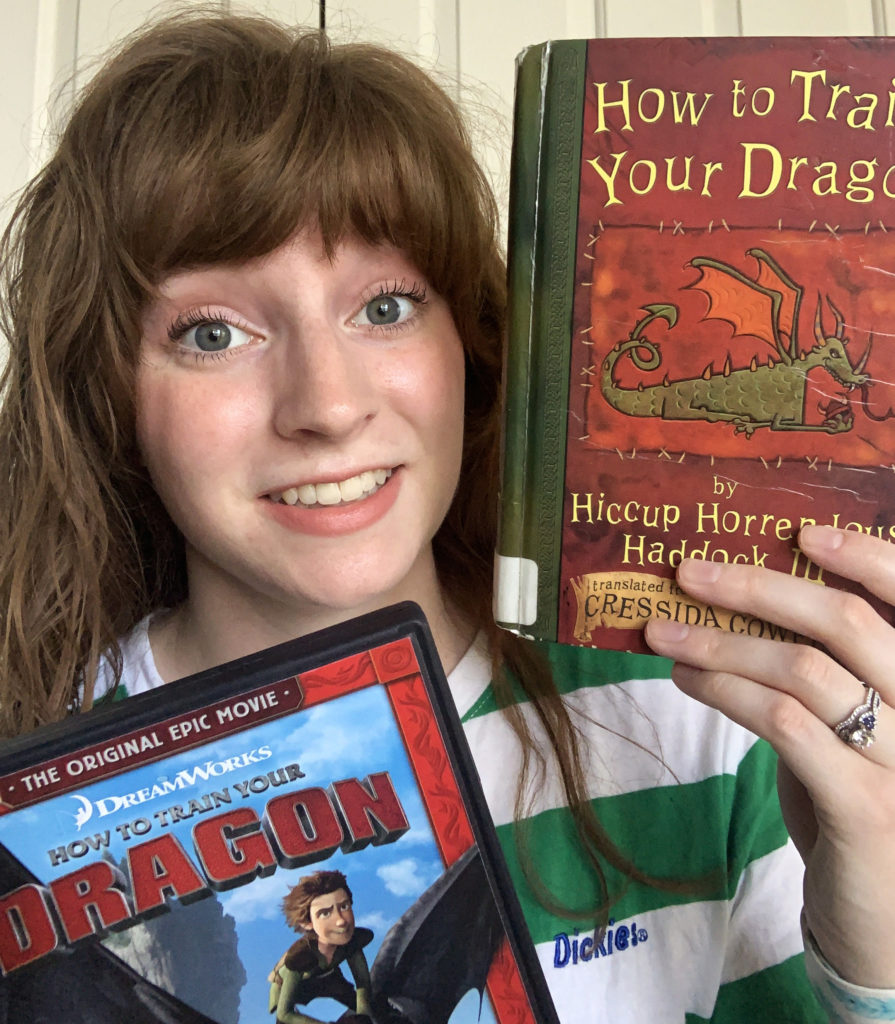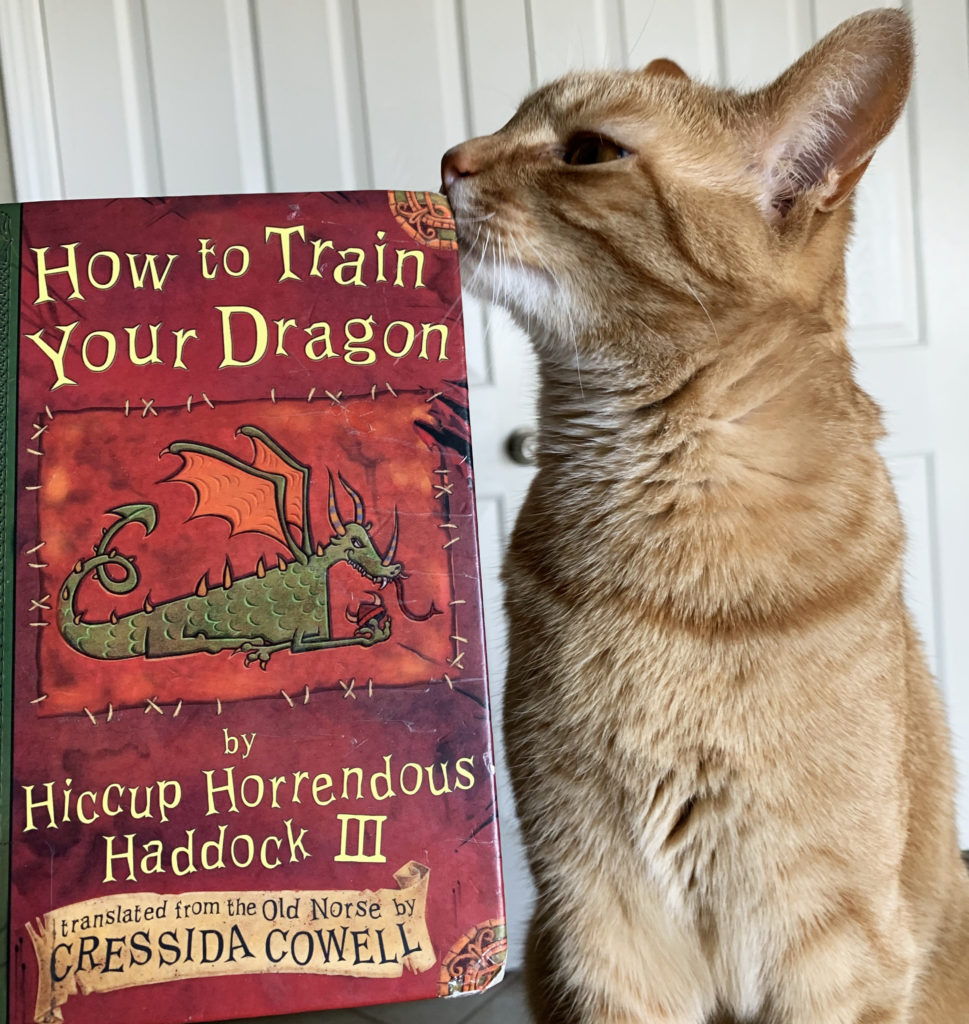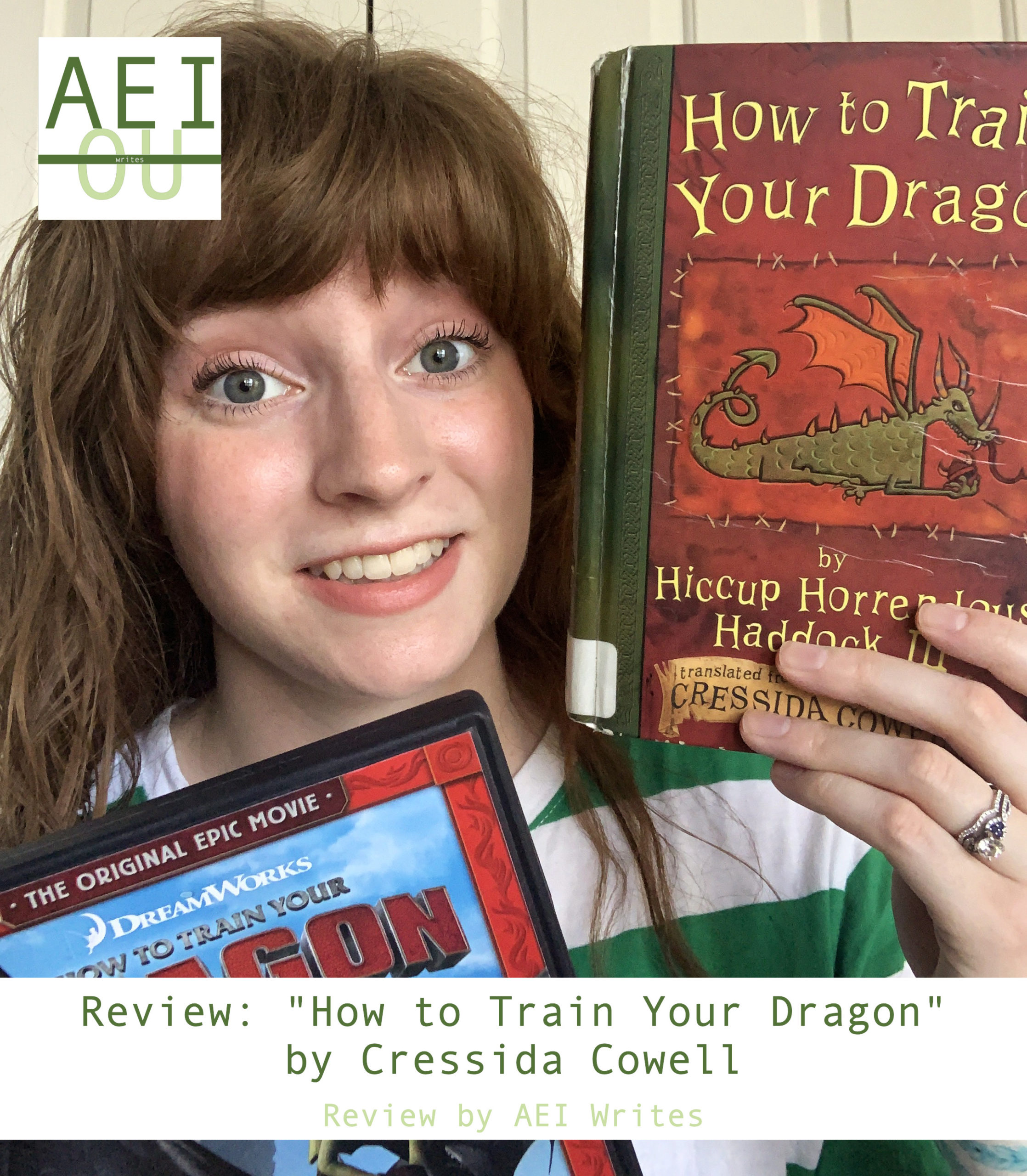I fell in love with Disney’s How to Train Your Dragon series early on. It centered on one of my favorite literary devices of all time: parallelism! I cried in literally every single movie because of how well the writers mastered parallelism. However, I had never read the books. Now that I’m trying to write juvenile fiction myself, I figured I would pick up Cressida Cowell’s version of How to Train Your Dragon.
Book vs. Movie: the same old debate

It’s usually about a 50/50 shot that when I see a movie based on a book, I absolutely hate it. I’ve grown to understand that movies just can’t cover the scope of events and characters that books can. However, sometimes the movie writers just make flat-out stupid choices! (I’m looking at you, Disney’s The Lightning Thief.) So when I started reading How to Train Your Dragon, I was shocked to find little resemblance to the movie.
Within the first chapter (and in this case, a chapter fills about 3-4 pages,) I realized I would have to evaluate the book How to Train Your Dragon completely separately from the movie. They just had so little in common! That said, I still love both for their own virtues. If I had read How to Train Your Dragon first, I probably would be foaming at the mouth right about now. However, since I fell in love with the movies first, I could admire them both for what they were: very, very different stories.
Characterization in the Books
Truly, Cowell excels at creating unique, specific characters. Plus, she implemented a downright hilarious naming technique for the characters and settings. (I mean, she named the bullies “Snotface Snotlout” and “Dogsbreath the Duhbrain.” Can you get any more perfect?) I loved that the hero of the story, Hiccup, is intentionally the weakest, most unassuming character in the book, except for perhaps his best friend. Cowell really nailed down her audience and reflected that in her characters.
I really only disliked one thing about the book How to Train Your Dragon. The book contains no female characters aside from Hiccup’s mother, who only makes a couple minor appearances. (Note: female characters do appear in the later books of the series. It’s pretty entertaining when they do.) However, I think Cowell did this because she knew her audience. She really directed the book toward young boys, especially ones who don’t like reading. That said, girls can certainly enjoy the story, too; I sure did!
Faith in How to Train Your Dragon

Admittedly, the religion in the book follows Norse tradition to match the Viking setting, so Thor and Loki have their moments in the sun when the characters mention religion at all. And, Toothless especially fills the role of spoiled little brat. While Toothless’ whining left me laughing out loud, he also engages in a sort of repentance and redemption. He, of all the dragons, finds selflessness hidden deep down in that little dragon heart of his. I greatly enjoyed Cowell’s focus on learning to think of others before oneself, which lines up quite nicely with Jesus’ teachings. So, take the Norse religion for what it is – a historically accurate world building tool – and enjoy a good laugh at the ridiculousness and redemption of this hearty group of Vikings.
Side Note on Book 2: How to Be A Pirate
Sequels often disappoint readers. Some inherent magic in the first book fades in the second. Well, not so with the How to Train Your Dragon series! Cowell really nailed down the characters’ voices and motivations in the second book. Plus, we get a lot more whining baby Toothless, which just makes me laugh. He accomplishes several hilariously heroic feats early on in the book that may remind you of your favorite pet cat.

